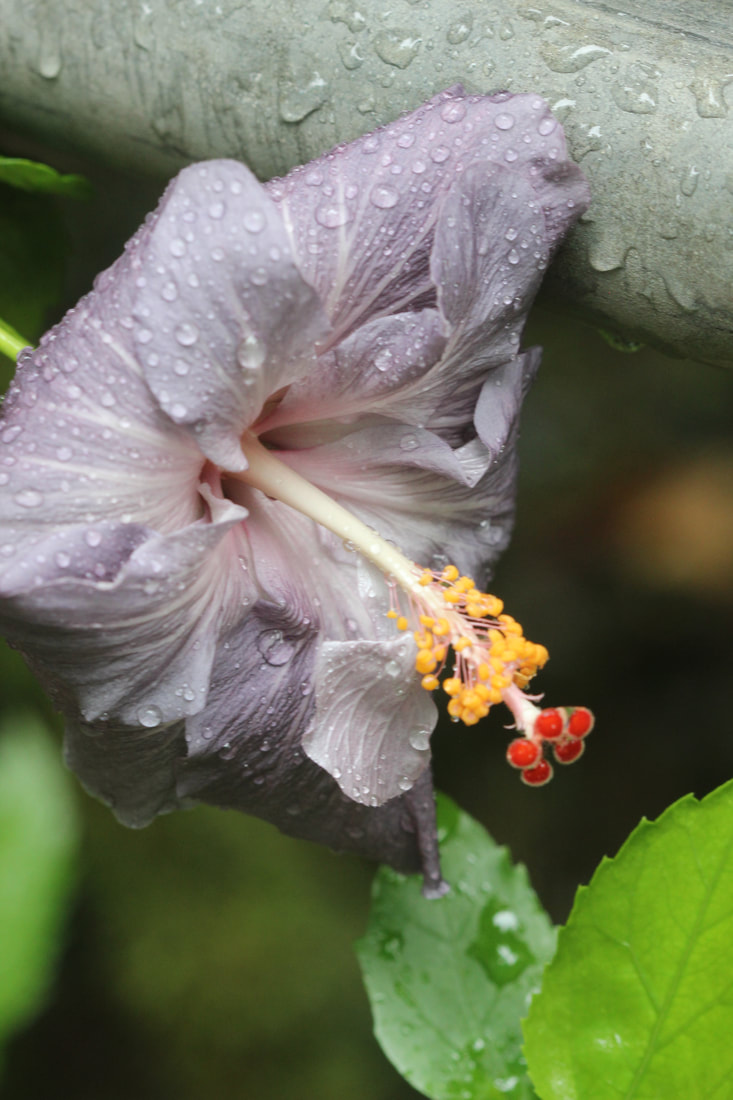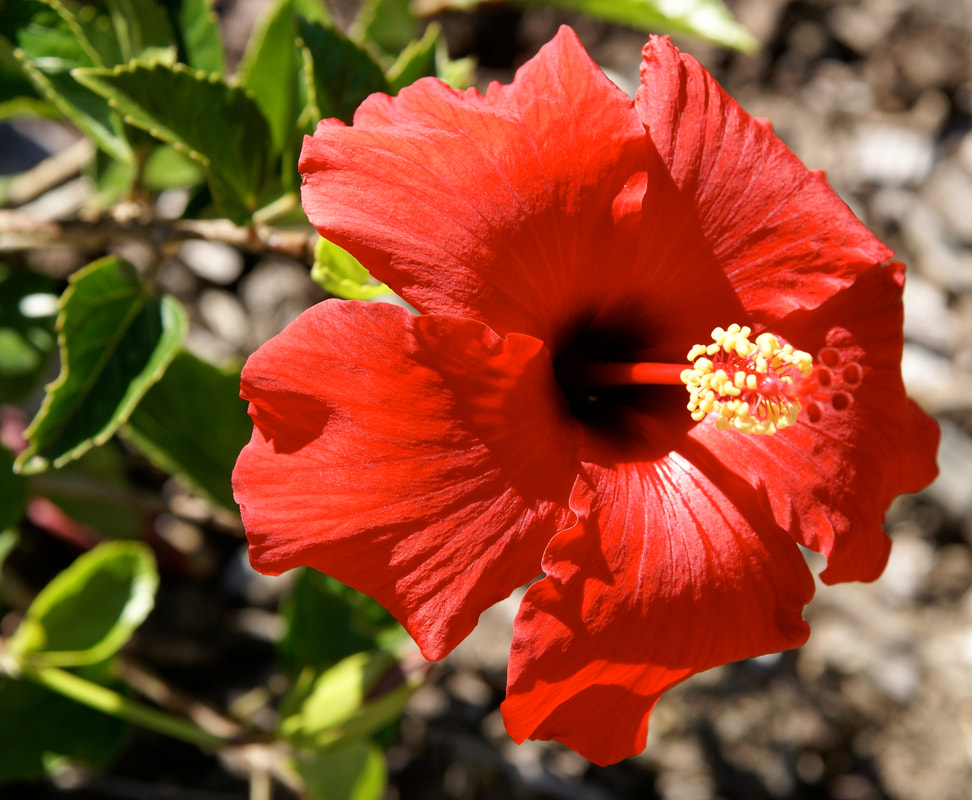by Eric Yarnell, ND, RH(AHG)
Last updated 6 June 2023
This monograph is protected by copyright and is intended only for use by health care professionals and students. You may link to this page if you are sharing it with others in health care, but may not otherwise copy, alter, or share this material in any way. By accessing this material you agree to hold the author harmless for any use of this information.Please donate to help support the extensive amount of time and energy it takes to create and maintain this site. Please donate to help support the extensive amount of time and energy it takes to create and maintain this site.
Table of Contents
Clinical Highlights
Roselle flowers are sour, delicious, nutritious food, as well as being astringent, hypotensive and nephroprotective.
Roselle flowers are extremely safe.
Roselle flowers are extremely safe.
Clinical Fundamentals
Part Used: the red fleshy sepals (calyces) are the main medicinal part.
Taste: for those who like like tart/sour things, this is extremely delicious. Adding even the smallest amount of sweetener brightens it up and makes it very appealing even for those who don't care so much for sour things.
Major Actions:
Major Organ System Affinities
Major Indications:
Major Constituents:
Adverse Effects: Generally there are none, but a very strong brew can sometimes cause an upset stomach unless it is taken with food.
Contraindications: None known
Drug Interactions: It should be taken with any drug that has to be taken away from food.
Taste: for those who like like tart/sour things, this is extremely delicious. Adding even the smallest amount of sweetener brightens it up and makes it very appealing even for those who don't care so much for sour things.
Major Actions:
- Hypotensive, including angiotensin-converting enzyme inhibiting
- Nephroprotective
- Astringent
Major Organ System Affinities
- Circulatory Tract
- Kidneys
Major Indications:
- Hypertension
- Chronic kidney disease
- Gastrointestinal infections
Major Constituents:
- Proanthocyanidins
- Tannins
Adverse Effects: Generally there are none, but a very strong brew can sometimes cause an upset stomach unless it is taken with food.
Contraindications: None known
Drug Interactions: It should be taken with any drug that has to be taken away from food.
Pharmacy Essentials
Tincture: 1:2–1:3 w:v ratio, 30% ethanol
Dose:
Acute, adult:
Chronic, adult:
Child: as adult but adjusted for body size
Glycerite:
Decoction: 2–3 g (1 heaping tsp) of root simmered, covered, in 250 ml of water for 15–30 min, the result of which makes one cup (not 8 oz, but one dose). The amount of water used can be adjusted to patient taste in subsequent cups.
Dose:
Acute adult:
Chronic, adult: 1 cup tid
Child: as adult but adjusted for body size
Capsules: these are not widely available..
Dose:
Acute, adult: 1–2 g per dose, otherwise dosed as with acute tincture
Chronic, adult: 1–2 g tid (not usually taken chronically)
Child: as adult but adjusted for body size
If you need help formulating with this herb, or any other, you can use the formulation tool. Remember that when using this herb in a formula, due to synergy, you can usually use less.
Dose:
Acute, adult:
Chronic, adult:
Child: as adult but adjusted for body size
Glycerite:
Decoction: 2–3 g (1 heaping tsp) of root simmered, covered, in 250 ml of water for 15–30 min, the result of which makes one cup (not 8 oz, but one dose). The amount of water used can be adjusted to patient taste in subsequent cups.
Dose:
Acute adult:
Chronic, adult: 1 cup tid
Child: as adult but adjusted for body size
Capsules: these are not widely available..
Dose:
Acute, adult: 1–2 g per dose, otherwise dosed as with acute tincture
Chronic, adult: 1–2 g tid (not usually taken chronically)
Child: as adult but adjusted for body size
If you need help formulating with this herb, or any other, you can use the formulation tool. Remember that when using this herb in a formula, due to synergy, you can usually use less.
Other Names
Latin synonyms:
Current correct Latin binomial:
Amelanchier carrii Rydb
English Common Names:
Native American Common Names (grouped linguistically and geographically):
Nēhiyawēwin ᓀᐦᐃᔭᐍᐏᐣ (Cree, Algonquian):
Ndee biyáti' (Western Apache, Athabaskan):
Akimel O'odham (Mountain Piman, Uto-Aztecan):
Hopilàvayi (Hopi, Uto-Aztecan):
Núu-'apaghapi (Ute, Uto-Aztecan):
Rarámuri ra'ícha (Tarahumara, Uto-Aztecan):
Shiwi'ma (Zuñi, isolate):
Current correct Latin binomial:
Amelanchier carrii Rydb
English Common Names:
Native American Common Names (grouped linguistically and geographically):
Nēhiyawēwin ᓀᐦᐃᔭᐍᐏᐣ (Cree, Algonquian):
Ndee biyáti' (Western Apache, Athabaskan):
Akimel O'odham (Mountain Piman, Uto-Aztecan):
Hopilàvayi (Hopi, Uto-Aztecan):
Núu-'apaghapi (Ute, Uto-Aztecan):
Rarámuri ra'ícha (Tarahumara, Uto-Aztecan):
Shiwi'ma (Zuñi, isolate):
Interchangeability of Species
Advanced Clinical Information
Additional Actions:
Additional Indications:
Additional Indications:
Botanical Information
Botanical Description:
Native range:
Native range:
Harvest, Cultivation, and Ecology
Cultivation:
Wildcrafting:
Ecological Status:
Wildcrafting:
Ecological Status:
References
Hosseinian BT (2007) "Saskatoon and wild blueberries have higher anthocyanin contents than other Manitoba berries" J Agric Food Chem 55(26):10832–8.
Mazza G (2005) "Compositional and functional properties of saskatoon berry and blueberry" Int J Fruit Sci 5(3):101–20.
Mazza G (2005) "Compositional and functional properties of saskatoon berry and blueberry" Int J Fruit Sci 5(3):101–20.


